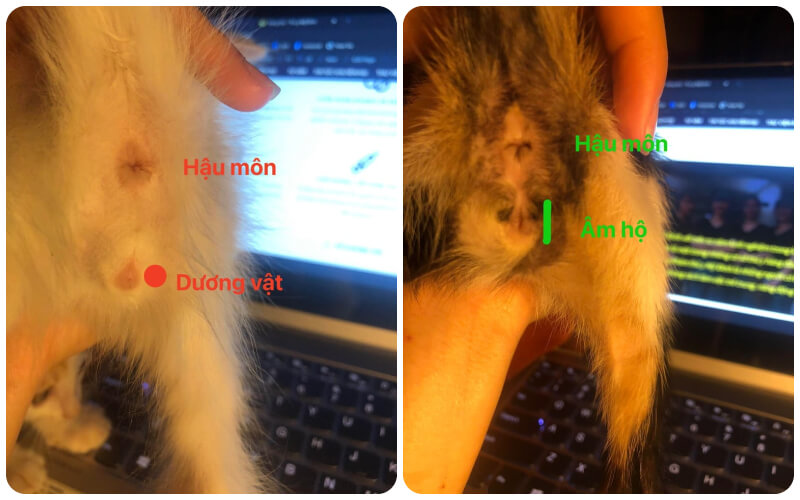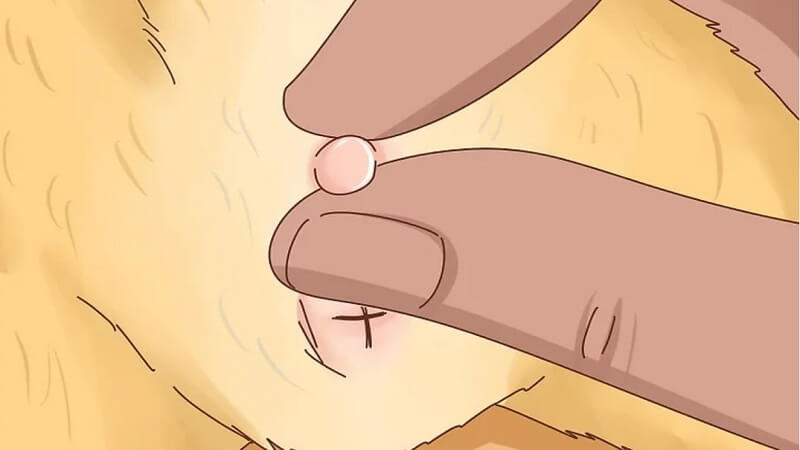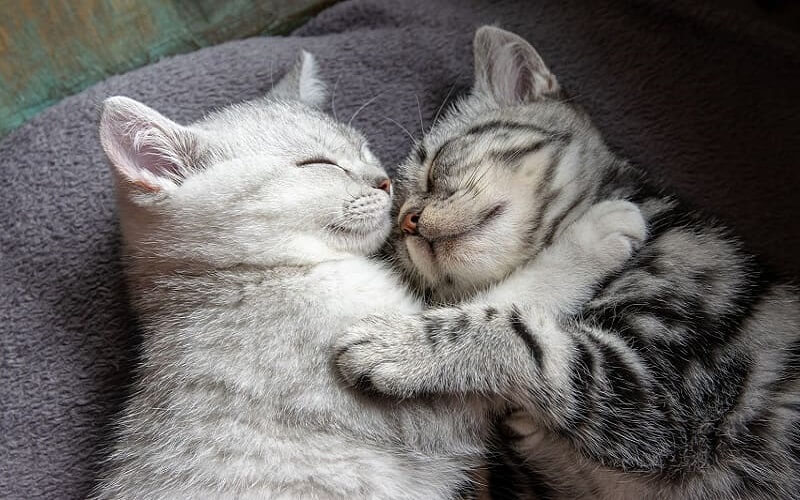Are you looking to adopt a kitten but are unsure if it’s male or female? We’re here to help with four accurate methods to determine your kitten’s gender.
1. Distinguishing Gender Through Physical Examination
The quickest way to identify your kitten’s gender is by examining their physical characteristics, particularly their genitalia. The differences between male and female kitten genitalia are quite distinct.
Distance Between Anus and Genitalia
For male kittens, the anus and urethral opening are at least 2.5 cm apart, or 1.3 cm for some breeds. In contrast, female kittens have a shorter distance of approximately 1.3 cm between the anus and the vulva. This is a clear indicator to distinguish between the genders.
 Male kitten on the left, female on the right
Male kitten on the left, female on the right
Shape of the Genitalia
Male kittens have a scrotum that houses two testicles, which can vary in size from small to as large as a cherry. Their penis is located beneath the scrotum and extends along the inner thighs, resembling an ellipsis or three dots vertically aligned.
 Male kitten on the left, female on the right
Male kitten on the left, female on the right
Female kittens, on the other hand, have a long, vertical slit-like vulva that tends to be slightly indented on both sides, resembling a colon (:).
Additionally, you can differentiate between genders by observing the scrotum and gently feeling for the testicles.
 Observe the scrotum and gently feel for the testicles to determine the gender.
Observe the scrotum and gently feel for the testicles to determine the gender.
If you notice a bulge or a small pouch-like structure between the two openings, it indicates the presence of a scrotum, which is unique to male kittens. Gently feeling this area will allow you to detect one or two bean-sized testicles, confirming the kitten’s male gender.
2. Other Distinguishing Factors
Apart from examining the genitalia, there are other factors that can help you determine your kitten’s gender, such as coat color and behavioral changes during estrus or “heat.”
Coat Color
 Male kittens often have striped coats, while females tend to have tri-colored or brown-yellow coats.
Male kittens often have striped coats, while females tend to have tri-colored or brown-yellow coats.
Generally, female kittens are more likely to have tri-colored or brown-yellow coats, although there are exceptions. Male kittens, on the other hand, often sport striped or banded patterns in their fur.
Behavioral Changes During Estrus
Observing your kitten’s behavior during estrus can also provide clues about their gender. Female kittens typically enter estrus between 6 and 10 months of age (some breeds may start earlier, around 4 months old). During this period, which can last for 2-19 days, female kittens may exhibit the following behaviors:
 Female kittens may become more affectionate during estrus.
Female kittens may become more affectionate during estrus.
- Restlessness and frequent crying, with a distinctive meow that resembles a baby’s cry.
- Blood may be observed around the genital area, and they may start urinating in inappropriate places, becoming more erratic in their behavior and seeking opportunities to escape outdoors.
- They may arch their back and raise their hindquarters into the air while being petted, presenting their rear end in a suggestive manner.
- Increased displays of affection, including rubbing and brushing against objects, people, or other animals more frequently than usual.
Male kittens, during this period, will also exhibit territorial behavior by urinating frequently and spraying urine to mark their territory. The urine has a strong, pungent odor, and they will keep their tails upright and in constant motion. The stronger the urine scent, the more attractive it is to female cats in the area.
 Signs of a male kitten in heat
Signs of a male kitten in heat
- Male kittens become bolder and more aggressive during estrus. They tend to have larger heads, thicker skin, and more muscular builds compared to female kittens. Their skulls and jawbones also appear more prominent.
- Male kittens may start wandering off and spending more time outdoors, often for several days at a time, in search of female cats in heat within their vicinity.
It’s important to note that these behavioral indicators are most accurate if your kitten has not been spayed or neutered.
We hope that these methods will help you accurately determine the gender of your beloved kitten. Thank you for reading, and we wish you and your furry friend a wonderful journey together!

































